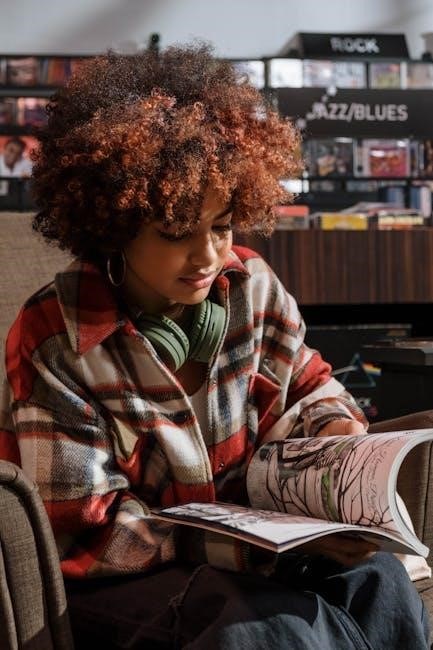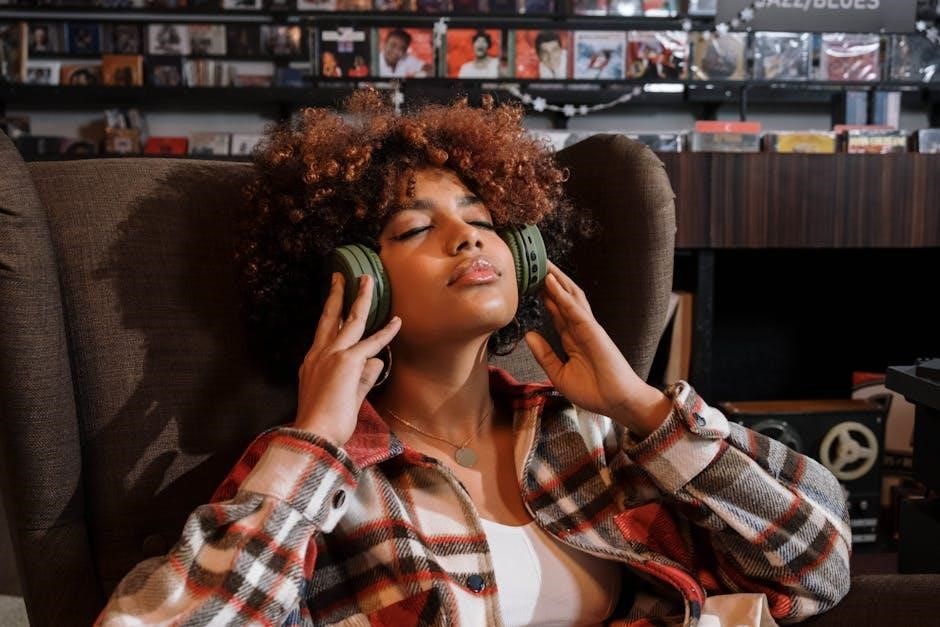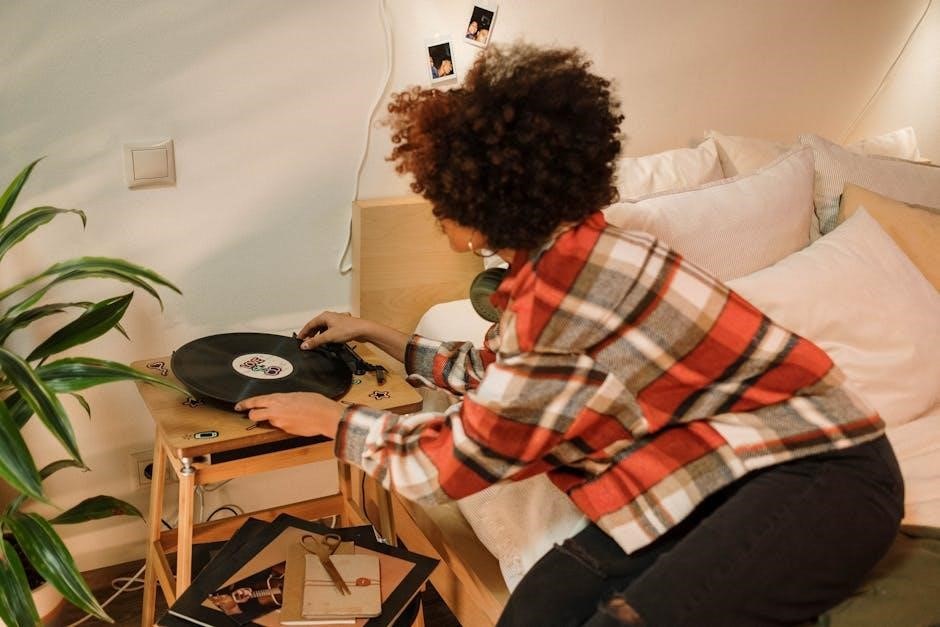shirt measurements guide for vinyl
Mastering precise shirt measurements ensures professional vinyl placement, essential for various shirt types, designs, and styles. This guide provides a comprehensive approach to accurate sizing and placement techniques.
1.1 Overview of Vinyl Application on Shirts
Vinyl application on shirts is a popular method for creating custom designs, offering durability and versatility. The process involves precise measurements to ensure designs fit various shirt styles and sizes. Proper sizing and placement are crucial for a professional finish, with factors like material, neckline, and fit influencing the outcome. This guide provides techniques for accurate vinyl placement, ensuring flawless results.
1.2 Importance of Accurate Measurements
Accurate measurements are vital for successful vinyl application, ensuring designs align perfectly and proportionally. Proper sizing prevents wasted materials and enhances visual appeal. Without precise measurements, designs may appear misaligned or disproportionate, compromising the finished product’s quality. This step is foundational for achieving professional results in custom shirt designs.

Standard Shirt Measurements
Standard shirt measurements include chest width, length, and sleeve dimensions, varying by age and size. These measurements guide vinyl placement accuracy and design scaling.
2.1 Adult Shirt Sizes and Dimensions
Adult shirts range from XS to 2XL, with variations in fit (regular, slim, plus size). Chest width and length are key measurements for vinyl placement. Always refer to the manufacturer’s sizing chart, as dimensions vary between brands. Accurate measurements ensure proper design scaling and professional results, avoiding poorly proportioned designs.
2.2 Youth and Toddler Shirt Measurements
Youth and toddler shirts are sized by age groups, such as 6-12 months, 2T-3T, and older. Designs for youth shirts typically range from 5-9 inches wide, while toddler shirts require smaller sizes (3-6 inches). Always measure the specific garment, as sizes can vary between brands. Precise measurements ensure designs are proportionate and visually appealing for smaller shirts.
2.3 Sleeve and Neckline Variations
Sleeve length and neckline style significantly impact vinyl placement. For V-necks, designs should be placed 1.5-2.5 inches below the deepest part of the V, while crew necks require placement 2.5-3.5 inches below the neckline. Sleeve designs should align with the sleeve’s length and circumference, typically ranging from 6-8 inches for adult sleeves. These variations ensure balanced and visually appealing vinyl applications.

Measuring Techniques for Vinyl Placement
Precise measurements ensure accurate vinyl placement. Use a flexible measuring tape to determine chest width, shirt length, and sleeve dimensions. Folding shirts to find the center crease helps align designs perfectly for professional results.
3.1 Tools and Methods for Precise Measurements
Accurate measurements require essential tools like flexible measuring tapes, alignment rulers, and heat-resistant surfaces. Folding shirts to find the center crease ensures symmetrical vinyl placement. Using projectors for intricate designs guarantees precise alignment. Record measurements meticulously to ensure well-proportioned designs. Always smooth wrinkles and use fabric markers to mark placement areas for flawless application. These methods ensure professional-grade vinyl placement every time.
3.2 Chest Width, Length, and Sleeve Measurements
Measure the chest width at the widest point, typically across the front. Shirt length is measured from the shoulder seam to the bottom hem. Sleeve length is taken from the shoulder to the cuff, with circumference measured at the widest part. These dimensions guide vinyl placement, ensuring designs fit proportionally. Accurate sleeve measurements prevent wrapping or distortion, while chest and length measurements ensure balanced design scaling.

Vinyl Size Chart for Different Age Groups
Vinyl size chart categorizes designs by age: adults (10-14″ wide), youth (5-9″), toddlers (3-6″), and onesies (3″ for newborns). Ensures balanced, proportional designs.
4.1 Adult Vinyl Size Recommendations
Adult vinyl designs typically range from 10 to 14 inches in width, depending on shirt size and style. Larger shirts require proportionally larger designs for balanced aesthetics. Measure chest width to determine maximum horizontal space. For crew necks, place designs 3 inches below the neckline; for V-necks, start 1.5 inches below the deepest point. Always test designs on scrap material before application.
4.2 Youth and Toddler Vinyl Size Guidelines
Youth shirts typically require designs sized between 5 to 9 inches wide, depending on the age and size. Toddler shirts need smaller designs, ranging from 3 to 6 inches, with onesies for newborns requiring the smallest sizes. Always measure the shirt to ensure proportional sizing, as designs that fit adult shirts may overwhelm smaller garments. Scale designs appropriately for each age group to maintain balance and aesthetics.
Creating a Custom Sizing Chart
Creating a custom sizing chart involves measuring various shirts, documenting their dimensions, and scaling designs proportionally. This ensures precise vinyl placement tailored to each garment size, achieving professional results.
5.1 How to Develop a Personalized Chart
To create a personalized sizing chart, measure various shirts across adult, youth, and toddler sizes. Record chest width, length, and sleeve dimensions. Document these measurements in a spreadsheet or chart, noting shirt type and brand. Use these insights to scale designs proportionally for each size, ensuring balanced placement. Test designs on scrap material before application for accuracy.
5.2 Scaling Designs Proportionally for Different Sizes
Scaling designs proportionally ensures a balanced look across all shirt sizes. Start with a base design for one size, then adjust dimensions proportionally for others. Use your personalized chart to maintain consistency. Test designs on scrap material to confirm scaling accuracy before final application. This method guarantees visually appealing results across adult, youth, and toddler shirts.

Best Practices for Design Placement
Centering and aligning vinyl designs accurately enhances professionalism. Use folding techniques to find the center crease, ensuring symmetry. Projectors can aid precise placement, while heat-resistant surfaces protect shirts during application.
6.1 Centering and Aligning Vinyl Designs
Centering and aligning vinyl designs is crucial for a polished look. Fold shirts in half to create a center crease, ensuring designs are symmetrical. Use a ruler or alignment tool for precise placement. For crew necks, measure 2.5-3.5 inches below the neckline. On V-necks, start designs 1.5-2.5 inches below the deepest point. Always double-check measurements to avoid misalignment.
6.2 Placement Adjustments for Different Necklines
Neckline styles require specific vinyl placement adjustments. For crew necks, center designs 2.5-3.5 inches below the neckline. V-necks need designs placed 1.5-2.5 inches below the deepest point to avoid obscuring the neckline. Scoop and rounded necks allow for slightly higher placement, ensuring designs complement the neckline shape without distortion. Always measure and adjust based on the neckline’s unique contours for optimal visual appeal.

Advanced Techniques for Vinyl Application
Elevate your vinyl work with heat-resistant surfaces, projectors, and layering techniques. These tools ensure precise alignment, proportional designs, and professional finishes for complex vinyl applications on shirts.
7.1 Using Heat-Resistant Surfaces and Projectors
For precise vinyl application, use heat-resistant surfaces like silicone mats or Teflon sheets to protect shirts during heat pressing, ensuring even heat distribution. Projectors are invaluable for casting designs onto shirts, allowing accurate tracing and alignment, especially for intricate patterns. This method guarantees professional results, particularly for complex or multi-color designs, by enabling perfect placement before applying vinyl.
7.2 Layering and Masking Techniques
Layering and masking techniques enhance multi-color vinyl designs by preventing overlap and ensuring alignment. Plan layer sequences to avoid misplacement, using low-tack tape to secure pieces. Masking shields areas from unintended adhesion. These methods allow intricate designs to be applied smoothly, maintaining precision and professionalism in the final product.
Troubleshooting Common Sizing Issues
Address sizing issues by resizing designs proportionally, adjusting heat press settings, and using alignment tools. Ensure accurate measurements and test designs on scrap material before final application.
8.1 Adjusting for Different Shirt Styles
Shirt styles vary, requiring tailored adjustments for vinyl placement. Crew necks and V-necks demand different neckline considerations, while fitted shirts need smaller designs. Relaxed styles accommodate larger vinyl. Always measure the specific shirt to ensure proper fit and alignment, using tools like rulers or alignment guides for accuracy. This ensures designs complement the garment’s style and proportions flawlessly.
8.2 Fixing Design Proportion and Alignment Problems
Correcting design proportion and alignment issues involves scaling designs proportionally and verifying placement before application. Use folding techniques or projectors for precise alignment. Test designs on scrap material to ensure accuracy. Adjust vinyl size relative to shirt dimensions and style, ensuring balanced proportions. Proper tools like alignment guides or rulers can help achieve professional results consistently.

Online Resources for Vinyl Sizing
Utilize online templates, sizing guides, and tutorials for precise vinyl placement. Websites offer printable charts, while forums and YouTube provide valuable tips and troubleshooting advice for vinyl projects.
9.1 Printable Templates and Sizing Guides
Downloadable templates and sizing charts are invaluable for precise vinyl placement. Available in formats like SVG or PNG, these guides provide visual references for various shirt sizes and types, ensuring accurate design dimensions and professional results. Use them to plan placements and proportions effectively for adult, youth, and toddler shirts, optimizing your vinyl application process.
9.2 Community Forums and Tutorials
Online forums and tutorials offer valuable insights and tips for mastering vinyl sizing and application. Crafters and professionals share experiences, troubleshooting solutions, and design strategies. YouTube tutorials provide step-by-step guides for measuring shirts, using tools like Cricut Design Space, and applying vinyl effectively. These resources help refine techniques and address common challenges, fostering a supportive community for enthusiasts and professionals alike.

Optimizing Designs for Different Shirt Styles
Optimize vinyl designs by considering shirt styles, such as crew necks, V-necks, and fitted or relaxed fits; Adjust design size and placement based on neckline and fabric type.
10.1 Crew Neck vs. V-Neck Placement
For crew neck shirts, place designs 3 inches below the neckline. V-necks require designs 1.5 inches below the deepest part of the V to avoid obscuring the neckline shape.
10.2 Designing for Fitted vs. Relaxed Shirts
Fitted shirts require smaller, more centered designs to maintain proportions, while relaxed shirts allow larger designs with versatile placement. Always check specific measurements for each shirt type to ensure proper fit and visual balance.

Tools for Vinyl Measurement and Alignment
Essential tools for vinyl measurement include alignment rulers, T-shirt rulers, and fabric markers. These tools ensure precise placement and centering, achieving professional results consistently.
11.1 T-Shirt Alignment Tools and Rulers
Accurate vinyl placement relies on T-shirt alignment tools and rulers. A T-shirt alignment tool or ruler helps center designs effortlessly. Folding the shirt to create a center crease is another effective method. These tools ensure precise measurements and proper alignment, saving time and enhancing professional results for various shirt sizes and styles.
11.2 Fabric Markers and Folding Techniques
Fabric markers and folding techniques simplify vinyl alignment. Use washable markers to mark margins or center points on shirts. Folding the shirt in half creates a center crease, guiding precise design placement. These methods ensure accurate positioning and professional results, making vinyl application efficient and stress-free for crafters and professionals alike.
Mastering vinyl placement requires precise measurements and techniques. By following this guide, you’ll achieve professional results, ensuring designs are perfectly sized and aligned for any shirt style or age group.
12.1 Mastering Vinyl Placement for Professional Results
Accurate shirt measurements and precise vinyl placement are key to achieving professional results. By understanding various shirt styles, using measurement guides, and applying best practices, you ensure designs are perfectly sized and aligned. This comprehensive approach guarantees consistent, high-quality outcomes, making your vinyl projects stand out with a polished, professional finish every time.


